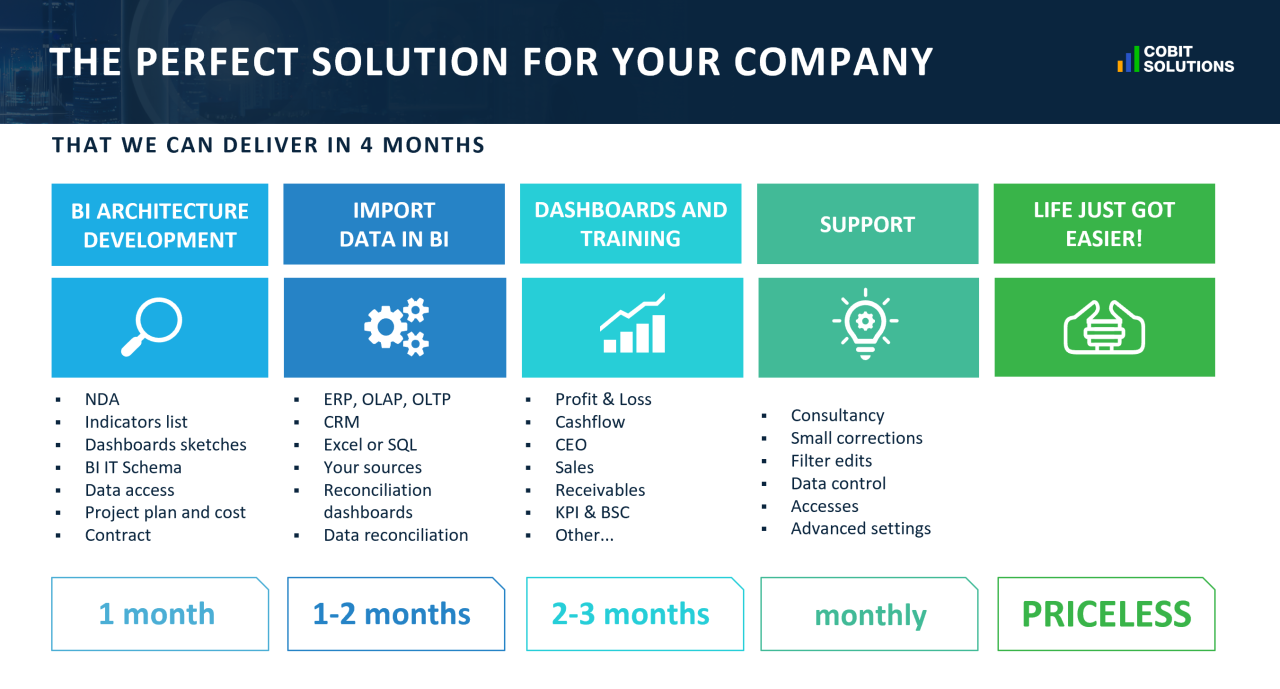“Steps to Implementing a Successful BI System” – Steps to Implementing a Successful BI System is a topic that resonates with businesses aiming to harness the power of data for informed decision-making. As organizations navigate their way through the complexities of data management, implementing an effective Business Intelligence (BI) system becomes paramount. This process can streamline operations, enhance productivity, and ultimately drive better business outcomes, making it crucial for companies of all sizes.
In today’s data-driven environment, understanding the key steps involved in setting up a BI system is essential. From identifying objectives and gathering the right tools, to ensuring the system is tailored to the specific needs of the organization, each stage plays a critical role. The integration of BI not only aids in analyzing trends and performance but also fosters a culture of data-informed strategies that can propel a business forward.
In today’s fast-paced world, the boundaries of communication and interaction have evolved tremendously. As technology continues to advance, our methods of connecting with each other have shifted, making it crucial for individuals and businesses alike to adapt to these changes. This article delves into the transformative journey of communication, examining how various tools and platforms have reshaped our interpersonal relationships and the implications of these changes in both personal and professional settings.To begin with, let’s take a closer look at the evolution of communication.
Historically, humans relied heavily on face-to-face interactions, handwritten letters, and verbal exchanges to convey their thoughts, ideas, and emotions. While these methods were effective, they often came with limitations, such as geographical distances and time constraints. The advent of the telegraph in the 19th century marked a significant turning point, allowing messages to be transmitted over long distances almost instantaneously.
This innovation laid the groundwork for further advancements in communication technology.Fast forward to the 20th century, the emergence of the telephone revolutionized how people interacted. With the ability to speak with someone on the other side of the world, the telephone bridged gaps that were once seemingly insurmountable. However, it was the digital revolution that truly transformed communication as we know it.
The internet, alongside smartphones, has enabled a level of connectivity that was previously unimaginable. Social media platforms, instant messaging applications, and video conferencing tools have all contributed to the way we communicate today.One major advantage of modern communication tools is the convenience they offer. With just a few taps on a screen, individuals can connect with friends, family, and colleagues, regardless of their location.
This instant access fosters closer relationships, as people can share life updates, professional achievements, and daily experiences in real-time. The ability to communicate without physical boundaries has also opened up opportunities for collaboration across borders, allowing businesses to operate on a global scale and individuals to forge friendships with others from diverse backgrounds.However, the rapid evolution of communication has not come without its challenges.
While the convenience of digital communication is undeniable, it also raises concerns about the quality of interactions. Face-to-face conversations allow for non-verbal cues, such as body language and facial expressions, which are often lost in digital exchanges. This can lead to misunderstandings, as messages may be interpreted differently without the context provided by physical presence. Moreover, the reliance on technology can sometimes lead to feelings of isolation, as individuals may prioritize online interactions over in-person connections.Another noteworthy aspect of modern communication is the impact of social media on self-expression and identity.
Platforms like Instagram, Twitter, and Facebook enable users to curate their online personas, sharing snippets of their lives with a wider audience. While this can be empowering, it also raises questions about authenticity and the pressure to present a perfect image. The phenomenon of “social media envy” can lead to negative self-perception, as individuals compare their lives to the seemingly flawless highlights showcased by others.In the professional sphere, effective communication is paramount for success.
The rise of remote work and virtual teams has further emphasized the importance of clear communication. Businesses must navigate challenges such as different time zones, cultural differences, and varying communication styles. Tools like Slack, Microsoft Teams, and Zoom have become essential for fostering collaboration and maintaining productivity in remote work environments. However, organizations must also be mindful of the potential for miscommunication and ensure that team members feel supported and connected.In light of these developments, it is essential to cultivate effective communication skills that align with contemporary expectations.
Active listening, empathy, and clarity are crucial components of successful interactions, whether online or offline. Additionally, being adaptable to different communication styles can enhance relationships, as it demonstrates respect and understanding for others’ perspectives.As we move forward in this digital age, it’s vital to strike a balance between embracing technology and nurturing authentic connections. While tools and platforms will undoubtedly continue to evolve, the core principles of effective communication—honesty, respect, and understanding—will remain timeless.
By prioritizing these values, individuals and businesses can navigate the complexities of modern communication while fostering meaningful relationships in both personal and professional realms.In conclusion, the landscape of communication has transformed dramatically over the years, influenced by technological advancements and societal changes. While modern tools provide unprecedented convenience and connectivity, they also present challenges that require us to adapt and grow.

By recognizing the importance of effective communication and being mindful of the impact of our interactions, we can cultivate relationships that withstand the test of time, ensuring that our connections remain strong and meaningful in an ever-evolving world. As we continue to navigate this journey, let us embrace the opportunities presented by technology while staying rooted in the timeless principles of communication that bring us together.



